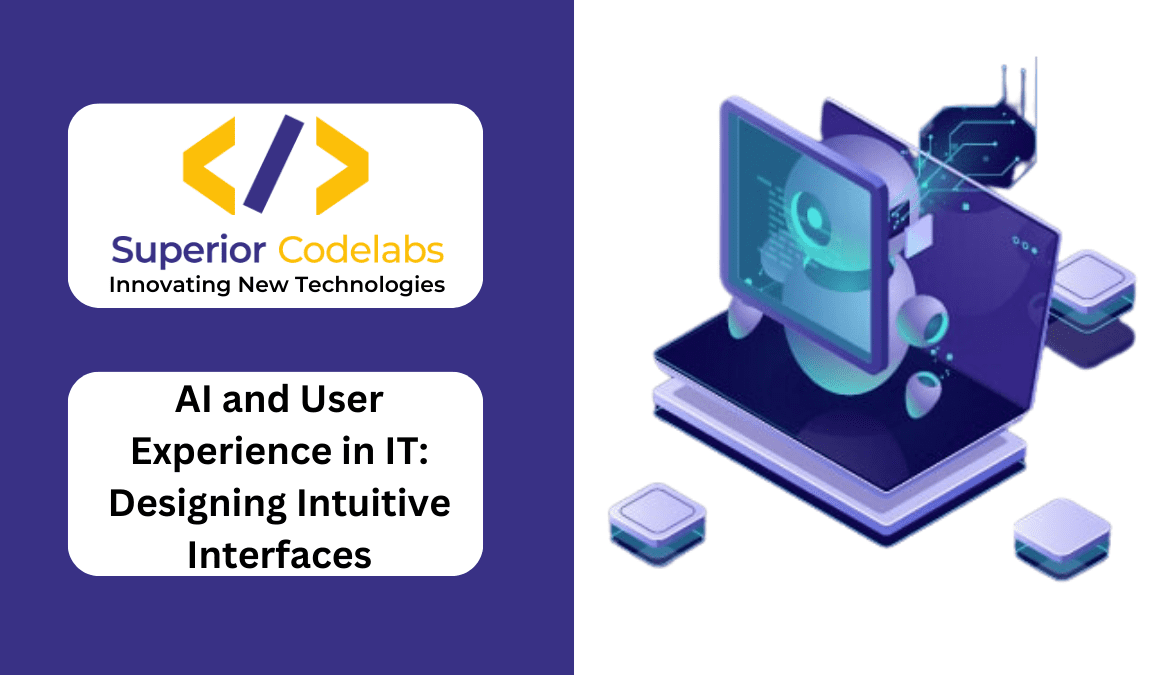In the ever-evolving landscape of Information Technology (IT), user experience (UX) has emerged as a critical factor in the success of any software application or system. As technology continues to advance, the role of Artificial Intelligence (AI) in shaping intuitive interfaces cannot be overstated. In this blog, we will delve into the symbiotic relationship between AI and UX, exploring how AI is transforming the way we design user-friendly interfaces.
Understanding the Essence of Intuitive Interfaces
Before we dive into the AI-driven revolution, let’s first grasp the concept of intuitive interfaces. These interfaces are designed with the user in mind, aiming to make interactions as natural and seamless as possible. An intuitive interface anticipates user needs, responds to their actions predictively, and minimizes cognitive load.
AI-Powered Personalization
One of the most profound ways AI enhances user experience is through personalization. AI algorithms analyze user behavior and preferences, enabling applications to adapt and customize the interface for each user. For example, recommendation engines in streaming platforms use AI to suggest content tailored to individual tastes. This personal touch not only simplifies navigation but also keeps users engaged and satisfied.
Natural Language Processing (NLP)
Natural Language Processing is a subset of AI that focuses on enabling machines to understand and communicate in human language. In IT, NLP is revolutionizing how we interact with software. Virtual assistants like Siri and Alexa are prime examples. These systems interpret spoken or typed commands, providing a conversational interface that users find intuitive and user-friendly.
Chatbots and Virtual Assistants
AI-powered chatbots and virtual assistants have become integral to many IT applications. These conversational interfaces can handle routine tasks, answer user queries, and guide them through complex processes. The ability to engage with users in real-time, in a conversational manner, enhances the overall UX by providing instant support and guidance.
User Behavior Prediction
AI algorithms can predict user behavior based on historical data, enabling applications to proactively assist users. For instance, e-commerce platforms can use AI to suggest products or services that a user might be interested in, reducing the effort required for users to find what they need.
Visual Recognition and Design
AI also plays a pivotal role in enhancing the visual aspects of interfaces. Image recognition technology can analyze user-generated content, making it easier to categorize and search for images or videos within applications. Additionally, AI can suggest design improvements based on user feedback and emerging design trends, ensuring that interfaces remain visually appealing and functional.
Accessibility and Inclusivity
AI has a significant impact on making interfaces more accessible to users with disabilities. Screen readers powered by AI can convert text to speech, making content accessible to visually impaired users. AI can also help identify and rectify accessibility issues in applications, ensuring that they comply with accessibility standards.
The Future of AI in UX Design
As AI continues to advance, we can expect even more innovative ways in which it will shape the future of UX in IT. Embracing AI in interface design is not just a trend but a necessity in a world where technology is deeply intertwined with our daily lives.
Conclusion
AI’s integration into UX design is revolutionizing how users interact with IT systems. It empowers designers to create intuitive interfaces that adapt to individual preferences, anticipate user needs, and provide a more inclusive experience. As the AI field evolves, we can anticipate even more exciting developments that will further enhance the synergy between AI and user experience in the realm of Information Technology. Stay tuned for more updates on this transformative journey.
1. What is the role of AI in improving user experience in IT?
AI plays a multifaceted role in enhancing user experience in IT. It enables personalization, natural language processing, chatbots, and virtual assistants, which collectively simplify interactions, predict user needs, and provide timely support.
2. How can AI help in making interfaces more accessible and inclusive?
AI aids in making interfaces accessible by powering screen readers, text-to-speech conversion, and identifying accessibility issues. It ensures that IT applications are compliant with accessibility standards, making them inclusive for users with disabilities.
3. Are there any notable examples of AI-driven user experience improvements in the IT industry?
Yes, several examples exist. Virtual assistants like Siri, recommendation engines in streaming services, and AI-powered chatbots in customer support are just a few instances of how AI has transformed user experiences in IT.
4. What are the challenges of integrating AI into UX design?
Integrating AI into UX design requires addressing challenges such as data privacy concerns, ensuring ethical AI usage, and striking a balance between automation and human interaction. Additionally, designing AI-driven interfaces demands a deep understanding of user behavior and preferences.
5. How can businesses leverage AI to enhance user experience and stay competitive in the IT sector?
Businesses can leverage AI by investing in AI-driven analytics to understand user behavior, implementing AI-powered chatbots for customer support, and using AI for real-time personalization and recommendation systems. Staying abreast of AI advancements and incorporating them into IT strategies is crucial for competitiveness.
For more information, visit Superior Codelabs.
Shaikh Fakruddin is the Founder and CEO of Superior Codelabs.





